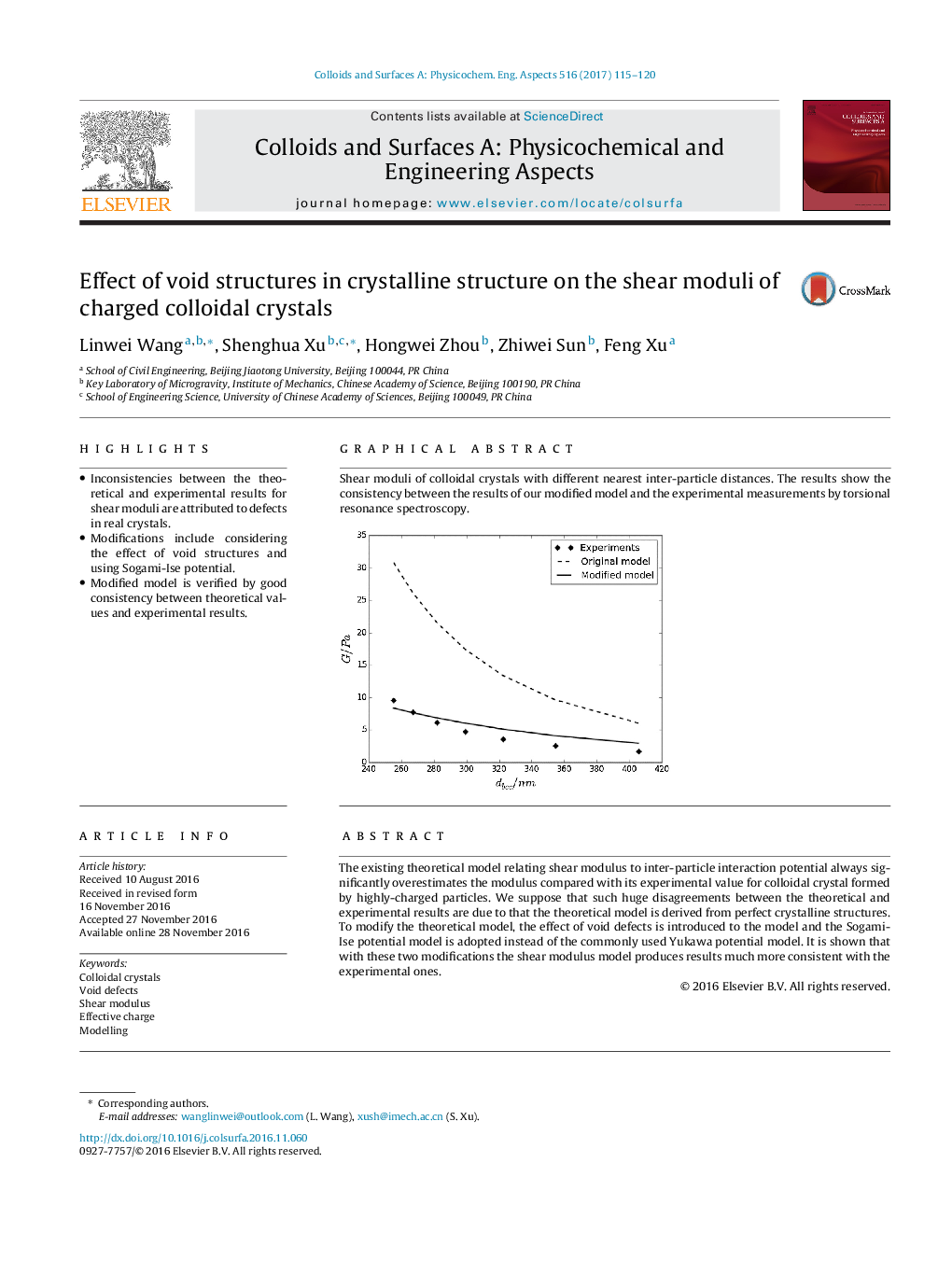| Article ID | Journal | Published Year | Pages | File Type |
|---|---|---|---|---|
| 4982369 | Colloids and Surfaces A: Physicochemical and Engineering Aspects | 2017 | 6 Pages |
â¢Inconsistencies between the theoretical and experimental results for shear moduli are attributed to defects in real crystals.â¢Modifications include considering the effect of void structures and using Sogami-Ise potential.â¢Modified model is verified by good consistency between theoretical values and experimental results.
The existing theoretical model relating shear modulus to inter-particle interaction potential always significantly overestimates the modulus compared with its experimental value for colloidal crystal formed by highly-charged particles. We suppose that such huge disagreements between the theoretical and experimental results are due to that the theoretical model is derived from perfect crystalline structures. To modify the theoretical model, the effect of void defects is introduced to the model and the Sogami-Ise potential model is adopted instead of the commonly used Yukawa potential model. It is shown that with these two modifications the shear modulus model produces results much more consistent with the experimental ones.
Graphical abstractShear moduli of colloidal crystals with different nearest inter-particle distances. The results show the consistency between the results of our modified model and the experimental measurements by torsional resonance spectroscopy.Download high-res image (78KB)Download full-size image
